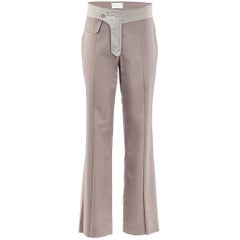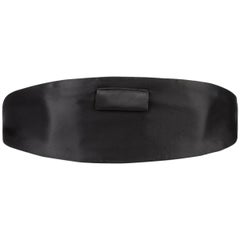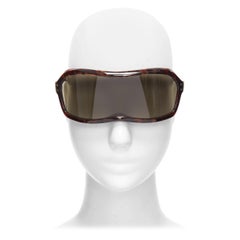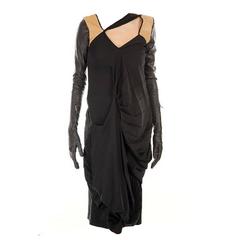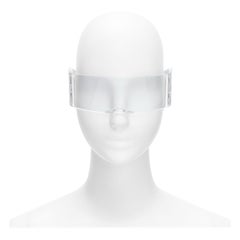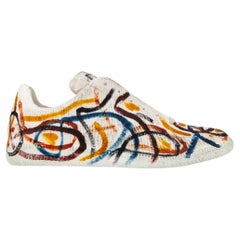Martin Margiela Rare
1990s French Other
20th Century French Pants
Early 2000s Italian Cummerbunds
21st Century and Contemporary Italian Sunglasses
21st Century and Contemporary Day Dresses
21st Century and Contemporary Italian Sunglasses
1990s Shoulder Bags
1990s Evening Dresses and Gowns
21st Century and Contemporary Shoes
Early 2000s French Coats
1990s Italian Coats and Outerwear
Early 2000s Belgian Skirts
1990s French Day Dresses
1990s Italian Coats and Outerwear
2010s Evening Gowns
21st Century and Contemporary Italian Vests
2010s Italian Camisoles and Shell Tops
2010s Italian High Heels
1990s Italian Casual Dresses
Early 2000s Crossbody Bags and Messenger Bags
1990s French Bodices
Early 2000s French Coats and Outerwear
2010s Italian Capes
1990s Italian Capes
21st Century and Contemporary Italian Sunglasses
21st Century and Contemporary Italian Scarves
1990s Italian Jackets
21st Century and Contemporary Italian Evening Dresses and Gowns
21st Century and Contemporary German Sunglasses
Early 2000s Cocktail Dresses
2010s Shoes
21st Century and Contemporary Italian Pants
21st Century and Contemporary Italian Pants
Early 2000s Italian Evening Dresses and Gowns
21st Century and Contemporary Italian Clutches
1990s Italian Casual Dresses
1990s French Vests
1990s French Shift Dresses
21st Century and Contemporary French Coats
21st Century and Contemporary Jackets
1990s French Coats and Outerwear
Early 2000s French Crop Tops
Early 2000s Italian Cummerbunds
1990s Italian Wrap Skirts
21st Century and Contemporary Evening Gowns
Early 2000s Italian Gloves
Early 2000s Italian Belts
Early 2000s Italian Belts
1990s Italian Day Dresses
Early 2000s French Jeans
2010s Shoes
1990s Italian Day Dresses
21st Century and Contemporary European Shoes
21st Century and Contemporary Evening Gowns
21st Century and Contemporary French Neckcloths
2010s Italian Cocktail Dresses
1990s Italian Suits, Outfits and Ensembles
1990s Jackets
- 1
Martin Margiela Rare For Sale on 1stDibs
How Much is a Martin Margiela Rare?
Maison Martin Margiela for sale on 1stDibs
Belgian designer Martin Margiela (b. 1957) — whose life, career, and designs for handbags, clothing and shoes have become cult-collector obsessions — pushed those who attended his shows outside their comfort zones. In the years following the 1988 debut of Maison Martin Margiela, he toyed with creative and aesthetic paradoxes that persist in fashion today.
Consider the Spring/Summer 2001 shirt patchworked from vintage clothing labels, or his famous corset dresses made from tailoring dummies, from his Fall/Winter 1997 line. Or his oversize collection for Fall/Winter 2000. In 1992, Margiela told Dépêche Mode magazine, “My clothes appeal to women of a certain mindset rather than of a specific age or physique.”
Born in Genk, Belgium, in 1957, Margiela knew he wanted to be a fashion designer after catching glimpses of Parisian fashion on TV as a child. Although his parents discouraged this career choice as an oddly funny aspiration, Margiela enrolled in the fashion program of the Royal Academy of Fine Arts Antwerp. There, he befriended and graduated a year ahead of the Antwerp Six — the acclaimed group of Belgian fashion designers comprising Dries Van Noten, Walter Van Beirendonck, Ann Demeulemeester, Marina Yee, Dirk Bikkembergs and Dirk Van Saene.
Like many of his contemporaries in the 1980s, Margiela understood Paris fashion but felt a deep resonance with the deconstructed beauty espoused by Japanese designers Yohji Yamamoto and Rei Kawakubo, of Comme des Garçons. Margiela’s fascination with Japan influenced many of his earliest collections and designs, from a dress pieced together from broken plates to his iconic Tabi boots, inspired by the split-toe Japanese worker’s shoe, which dates back to the 15th century.
Margiela decided to launch his own line while working for renowned Paris designer Jean Paul Gaultier. With Belgian designer Jenny Meirens, Margiela established Maison Martin Margiela in the French capital in 1988.
Margiela’s debut show was nothing short of spectacular. Set in a packed Café de la Gare in the still-seedy Marais district, it was also scandalous to the Parisian fashion set of the time. The designer tore up the conventions of contemporary couture presentations, most notably having his models, plucked from the streets and wearing ink-blotted Tabis, wend their way through the crowd.
The show redefined the concept of the runway in a way that would later inspire such designers as Alexander McQueen and Demna Gvasalia.
While the notoriously private designer retired from fashion in 2009, for many Maison Martin Margiela collectors, his pieces capture the irreverence of the postwar, post-punk late 1980s and ’90s. Katy Rodriguez, cofounder of the cult vintage fashion shop Resurrection, is among those who felt a connection to Margiela’s clothing in the subliminal challenges it posed to the time’s beauty norms.
“Growing up in San Francisco and coming out of the end of punk rock, not wanting to be objectified, not wanting to be seen as a sexual object, not wanting your value to be just because you’re pretty — all those clothes played into all of that,” she says. “It really was a reflection of the kind of world the young people I knew at the time wanted to live in.”
John Galliano was named creative director at the house in 2014 and it rebranded as Maison Margiela in 2015.
Find vintage Maison Martin Margiela boots, evening dresses, jackets and more on 1stDibs.
- 1stDibs ExpertApril 5, 2022John Galliano is currently creative director of the French fashion house Maison Margiela, previously called Maison Martin Margiela. In the past, he has been the creative director for Givenchy and Christian Dior. Browse a range of expertly vetted Maison Margiela pieces from top sellers on 1stDibs.
- 1stDibs ExpertApril 5, 2022The key to spotting fake Maison Martin Margiela products is quality. The Maison Margiela brand is known for designer-level craftsmanship and materials. An authentic Maison Margiela product should have neat, even stitching, a crisp logo and high level of attention to detail. Shop an array of expertly vetted Maison Margiela pieces from top boutiques on 1stDibs.
- What is Maison Martin Margiela?1 Answer1stDibs ExpertApril 5, 2022Maison Martin Margiela, now simply called Maison Margiela, is a French fashion house founded in 1988. It was first founded by Belgian designer Martin Margiela and takes inspiration from avant-garde styling. On 1stDibs, find a range of authentic Maison Margiela pieces.

